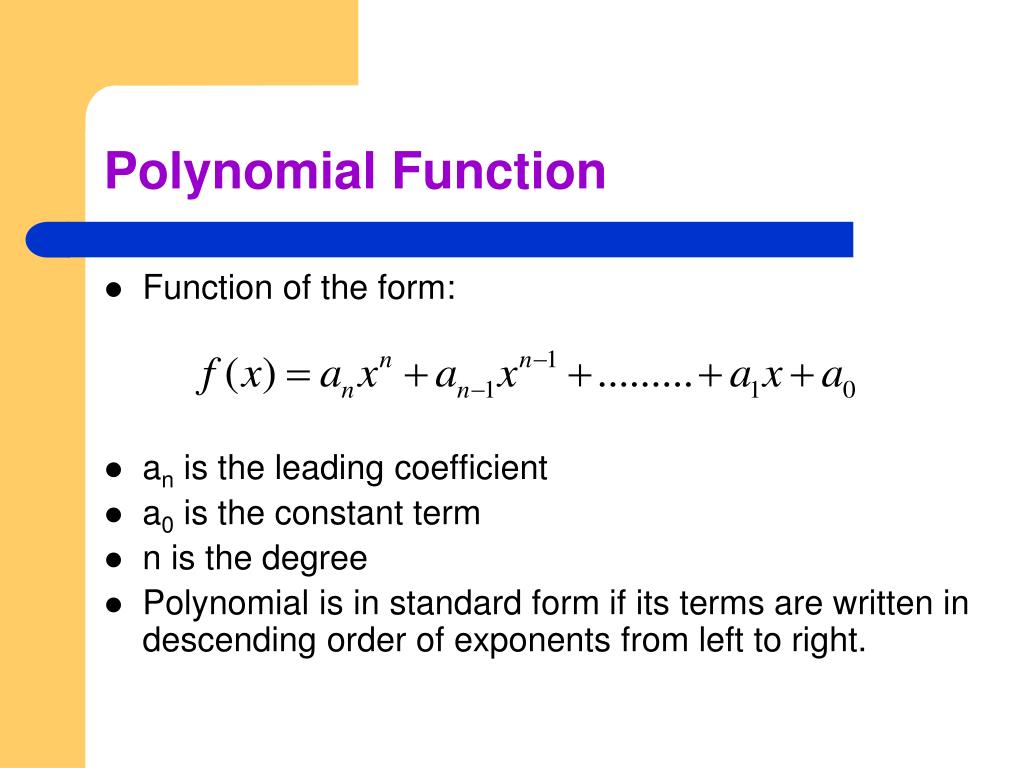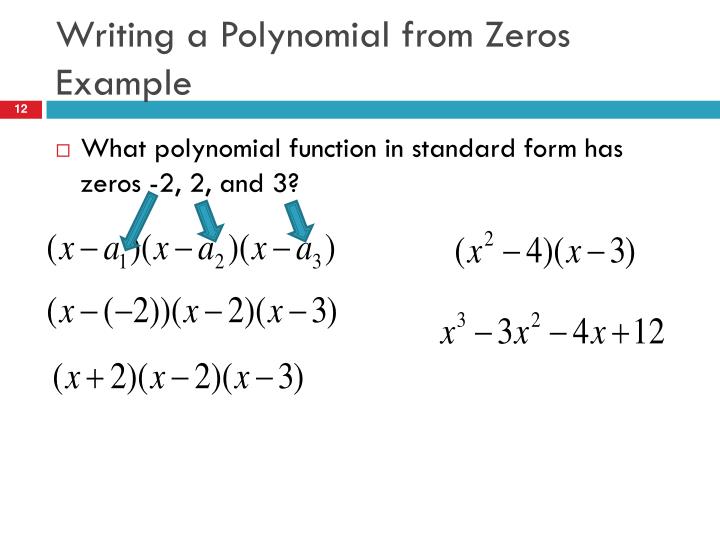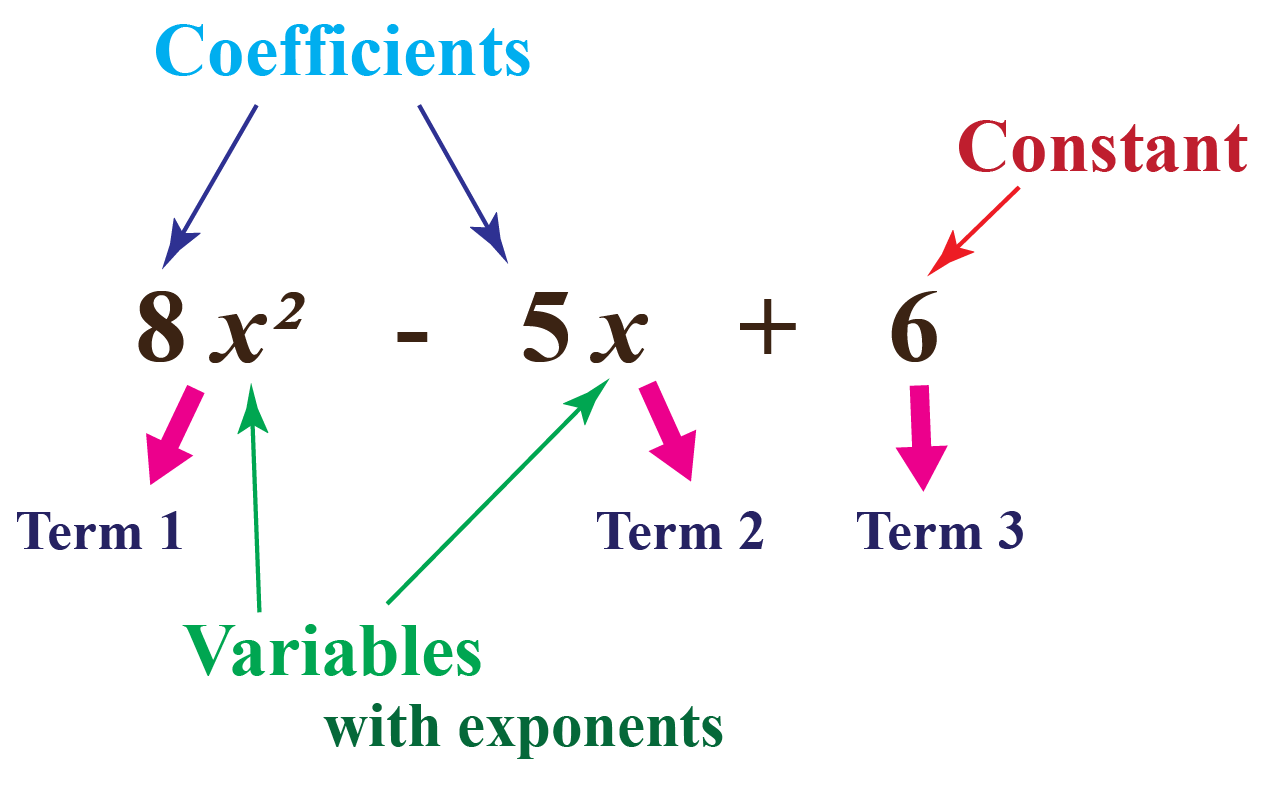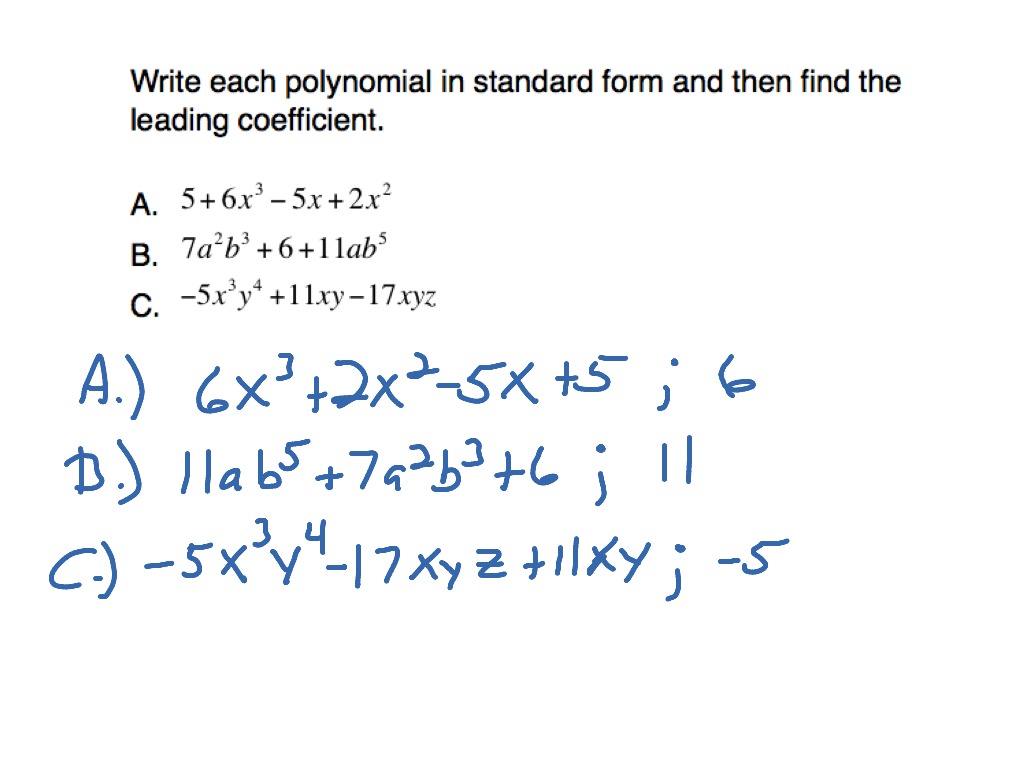Standard Form Polynomial Function
Standard Form Polynomial Function - Write the polynomial in standard form. The most common types are: This algebraic expression is called a polynomial function in variable x. If this is new to you, we recommend that you check out our end behavior of polynomials article. Web to solve a polynomial equation write it in standard form (variables and canstants on one side and zero on the other side of the equation). A polynomial is in standard form when its term of highest degree is first, its term of 2nd highest is 2nd etc. Web a quadratic function is the polynomial function defined by a quadratic polynomial. Put this in standard form: Web standard form of a polynomial the general form to represent the polynomial is as follows: Web , what does f (x) f (x) approach?
Web the standard form for writing a polynomial is to put the terms with the highest degree first. Write the term with the highest exponent first. You can also write them horizontally and group the like terms. The solutions are the solutions of the. So quadratic polynomial and quadratic function were almost synonymous. F ( x) = a n x n + a n − 1 x n − 1 + a n − 2 x n − 2 +. To do this we will first need to make sure we have the polynomial in standa. If this is new to you, we recommend that you check out our end behavior of polynomials article. Web polynomials are sums of terms of the form k⋅xⁿ, where k is any number and n is a positive integer. Put this in standard form:
Write the term with the highest exponent first. Web what is the standard form of a quadratic? Before the 20th century, the distinction was unclear between a polynomial and its associated polynomial function; + a 1 x + a 0 here, a 0 ,….a n is a constant x is a variable types of polynomial the different types of polynomial expressions are: If f f has a zero of odd multiplicity, its graph will cross the x x. Web step by step guide to writing polynomials in standard form. 5.2 power functions and polynomial functions; Write the rest of the terms with lower exponents in descending order. Group all the like terms. 3 x 2 − 7 + 4 x 3 + x 6 the highest degree is 6, so that goes first, then 3, 2 and then the constant last:
Standard form of a polynomial Polynomials, Standard form, Combining
If f f has a zero of odd multiplicity, its graph will cross the x x. F ( x) = a n x n + a n − 1 x n − 1 + a n − 2 x n − 2 +. P (x) = a = ax 0. Web 👉 learn how to determine the end behavior of.
Polynomials in Standard Form YouTube
F ( x) = a n x n + a n − 1 x n − 1 + a n − 2 x n − 2 +. Web a polynomial is in standard form when all its terms are arranged by decreasing order of degree, that is, a polynomial in standard form is a polynomial whose terms are all ordered.
Introduction to Polynomial Functions
Write the following polynomials in standard form. Put this in standard form: This algebraic expression is called a polynomial function in variable x. For example, 2x+3y=5 is a linear equation in standard form. 5.2 power functions and polynomial functions;
Write each Polynomial in Standard Form YouTube
Group all the like terms. Write the following polynomials in standard form. So quadratic polynomial and quadratic function were almost synonymous. The most common types are: To do this we will first need to make sure we have the polynomial in standa.
Polynomial Functions Types Graph Solved Examples Cuemath
Where all ai’s are zero, i = 0, 1, 2, 3,., n. A polynomial possessing a single variable that has the greatest exponent is known as the degree of. If this is new to you, we recommend that you check out our end behavior of polynomials article. Watch this tutorial to learn the steps it takes to make sure a.
PPT Graphing Polynomial Functions PowerPoint Presentation, free
Where all ai’s are zero, i = 0, 1, 2, 3,., n. Web step by step guide to writing polynomials in standard form. Web polynomials are sums of terms of the form k⋅xⁿ, where k is any number and n is a positive integer. So quadratic polynomial and quadratic function were almost synonymous. Web to solve a polynomial equation write.
PPT Polynomials, Linear Factors, Zeros PowerPoint Presentation ID
To do this we will first need to make sure we have the polynomial in standa. A polynomial is in standard form when its term of highest degree is first, its term of 2nd highest is 2nd etc. Want to put it in standard form? Web a polynomial function in standard form is: Web polynomials are sums of terms of.
Standard Form Polynomial Cuemath
An example of a polynomial of a single indeterminate x is x2 − 4x + 7. Web polynomials are sums of terms of the form k⋅xⁿ, where k is any number and n is a positive integer. F ( x) = a n x n + a n − 1 x n − 1 + a n − 2 x.
Standard Form Polynomial / Solved Write Each Polynomial Function In
Where all ai’s are zero, i = 0, 1, 2, 3,., n. Write the polynomial in standard form. Web steps for the subtraction of polynomials. Web the standard form for writing a polynomial is to put the terms with the highest degree first. Write the term with the highest exponent first.
Polynomial functions
+ a 1 x + a 0 here, a 0 ,….a n is a constant x is a variable types of polynomial the different types of polynomial expressions are: Web let us look at the steps to writing the polynomials in standard form: Put this in standard form: Web to solve a polynomial equation write it in standard form (variables.
F(Y) = Ay 2 + By + C, A, B, And C Are All Constants.
5.3 graphs of polynomial functions; Web a polynomial is in standard form when all its terms are arranged by decreasing order of degree, that is, a polynomial in standard form is a polynomial whose terms are all ordered from highest to lowest degree. + a 1 x + a 0 here, a 0 ,….a n is a constant x is a variable types of polynomial the different types of polynomial expressions are: 3 x2 − 7 + 4 x3 + x6 the highest degree is 6, so that goes first, then 3, 2 and then the constant last:
For Example, The Following Polynomial Is In Standard Form:
This form is also very useful when solving systems of two linear equations. Web a polynomial function in standard form is: Web there are various types of polynomial functions based on the degree of the polynomial. This algebraic expression is called a polynomial function in variable x.
Web Let Us Look At The Steps To Writing The Polynomials In Standard Form:
To do this we will first need to make sure we have the polynomial in standa. Write the polynomials vertically (one below the other) such that terms are aligned. The most common types are: Write the following polynomials in standard form.
Put This In Standard Form:
If f f has a zero of odd multiplicity, its graph will cross the x x. Where all ai’s are zero, i = 0, 1, 2, 3,., n. 3 x 2 − 7 + 4 x 3 + x 6 the highest degree is 6, so that goes first, then 3, 2 and then the constant last: If this is new to you, we recommend that you check out our end behavior of polynomials article.









